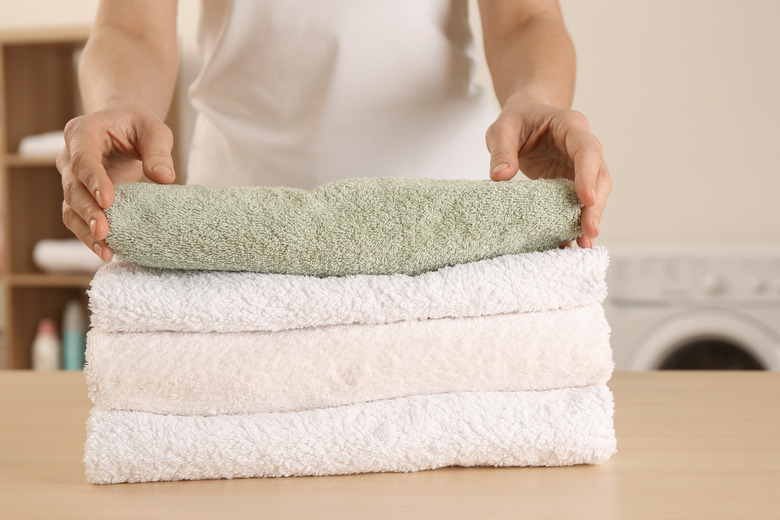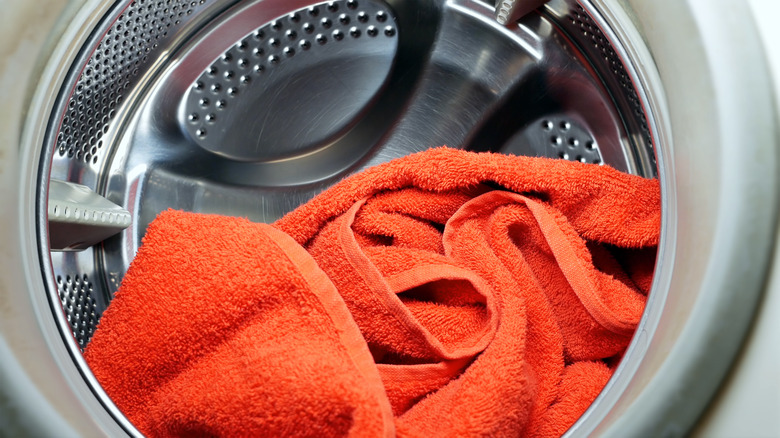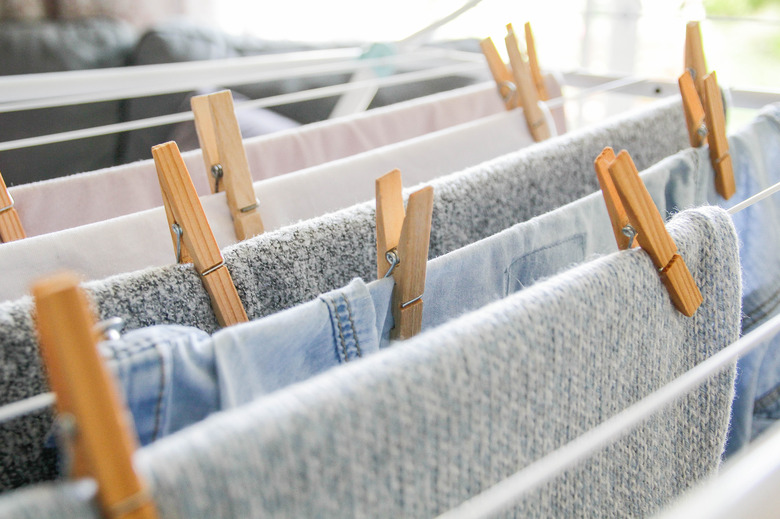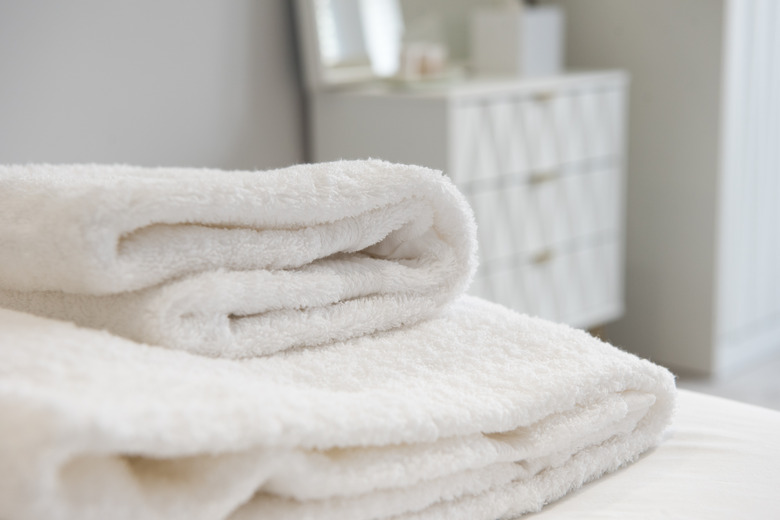How To Wash Towels
We may receive a commission on purchases made from links.
You probably haven't spent a lot of time pondering how to wash towels, but perhaps you should. When you step out of the shower, the towel you reach for should feel super soft and smell divine. If your towels are anything less, you're missing out on one of life's simplest pleasures. Happily, a few simple tweaks to your towel-washing routine is all it takes to see what you've been missing.
Here's how to wash your towels properly, plus some tips on towel care to keep your towels soft and give them the longest possible lifespan.
Things Needed
-
Baking soda
-
Laundry detergent
-
Bleach or color-safe bleach
-
Laundry drying balls or tennis balls
How to Wash Towels
1. Sort and Prewash
Although sorting is not as crucial with towels as it is with your workwear, washing colored and white towels together does lead to some color bleeding. You can avoid this by separating your towels. Pre-washing is optional but works well when you have gym towels or towels with a strong musty odor.
- Sort your towels, separating colors and whites.
- Give your dirty towels a good shake to fluff them up a bit.
- Throw the towels in the washing machine and wash them with 1/2 cup of baking soda only (no detergent).
2. Wash the Towels
When getting ready to wash your towels, make sure you haven't exceeded the comfortable capacity for your washing machine. An overloaded machine may become unbalanced during the wash cycle and will mash your towels together, preventing them from getting completely clean.
- Add laundry detergent and, if desired, bleach or color-safe bleach, as appropriate. Use about half of the recommended amount of detergent. Too much can build up in towels and leave them flat.
- Set the washing machine to a cycle made for towels or its longest wash cycle for a thorough clean.
- Wash the towels in your desired water temperature.
3. Dry the Towels
You can dry your towels in the dryer or hang them out on a clothesline. Towels smell heavenly when dried outside, but they can get a little stiff. Stick with your dryer if you don't like a crisp towel. Or, you can hang-dry the towels outside and then run them through a heat-free fluff cycle when you bring them inside to soften and fluff them.
- Transfer the towels to the dryer one at a time, shaking out and fluffing each one as you go.
- Toss a few wool laundry balls or tennis balls in the dryer with the towels.
- Set the dryer to a medium setting (or drying time) and dry your towels. Higher heat settings will work but may shorten the length of the cotton fibers in your towels and wear them out quicker. The fabric care label on your towel should always have the final say on how you proceed.
- Remove your towels promptly when they are dry. Overdrying towels may damage the fibers, so dry the towels completely but don't leave them on a longer dryer cycle than necessary.
4. Fold and Store the Towels
When your towels are dry, storing them properly will help keep them fluffy. Don't pile as many towels as you can on your linen closet shelf. Instead, stack only as many towels as will fit comfortably so that you do not squish them together.
- Fold the towels. Fold each towel in half with the open end on the left; then fold in half again. Fold up the bottom third of the towel and then fold down the top third.
- Place the towels in the linen closet or on a storage shelf with the smooth folded edge facing out for a cleaner look and to make grabbing a towel easier when you need one.
- If desired, lay a dryer sheet on the linen closet shelf under or next to your towels to keep them smelling fresh.
Towel-Buying Tips
Towel-Buying Tips
Making sure you have soft, fluffy towels starts with buying the right ones. Poor-quality towels will always be poor-quality towels no matter how you wash and dry them. Cotton is super absorbent and strong, so try to buy towels made of 100 percent cotton. Loop count matters too. When towel fibers are woven, the material forms a series of small loops. The more loops per square inch, the better the towel will dry you. A high thread count generally indicates more loops.
How the threads in the towel are constructed also makes a difference. Some threads are combed, which means the shortest threads are removed so only the strongest, longest, and highest-quality threads remain. Another construction methods is ringspun. This process twists both short and long threads tightly together, resulting in a strong thread that has a more luxurious feel compared to combed cotton.
Your other two options are terry and twist. Twisted threads are similar to ringspun, but the fibers are spun together far more slowly — think spinning wheel versus factory equipment. The twisting process is a less rigorous one, and fewer twists make the towel feel softer. More twists make the towel last longer, but fewer twists make it more absorbent because it increases the surface area. Finally, there are terry towels. These are made using extra thread to produce larger loops for superior absorbency.
But there is one more factor to consider: weight. Towel makers measure weight in grams per square meter (GSM), which breaks down as follows:
GSM in Towels
|
Weight |
Properties |
|
300-400 GSM |
Light and quick-drying; great for kitchen towels |
|
400-600 GSM |
Medium weight but soft; most bath and beach towels |
|
600-900 GSM |
Heavy, thick, and very absorbent; takes a long time to dry |
When shopping for towels, compare durability and comfort. The best way to pick the right towel characteristics for you is to actually feel the towels yourself. Shop online only once you know which characteristics you prefer.



